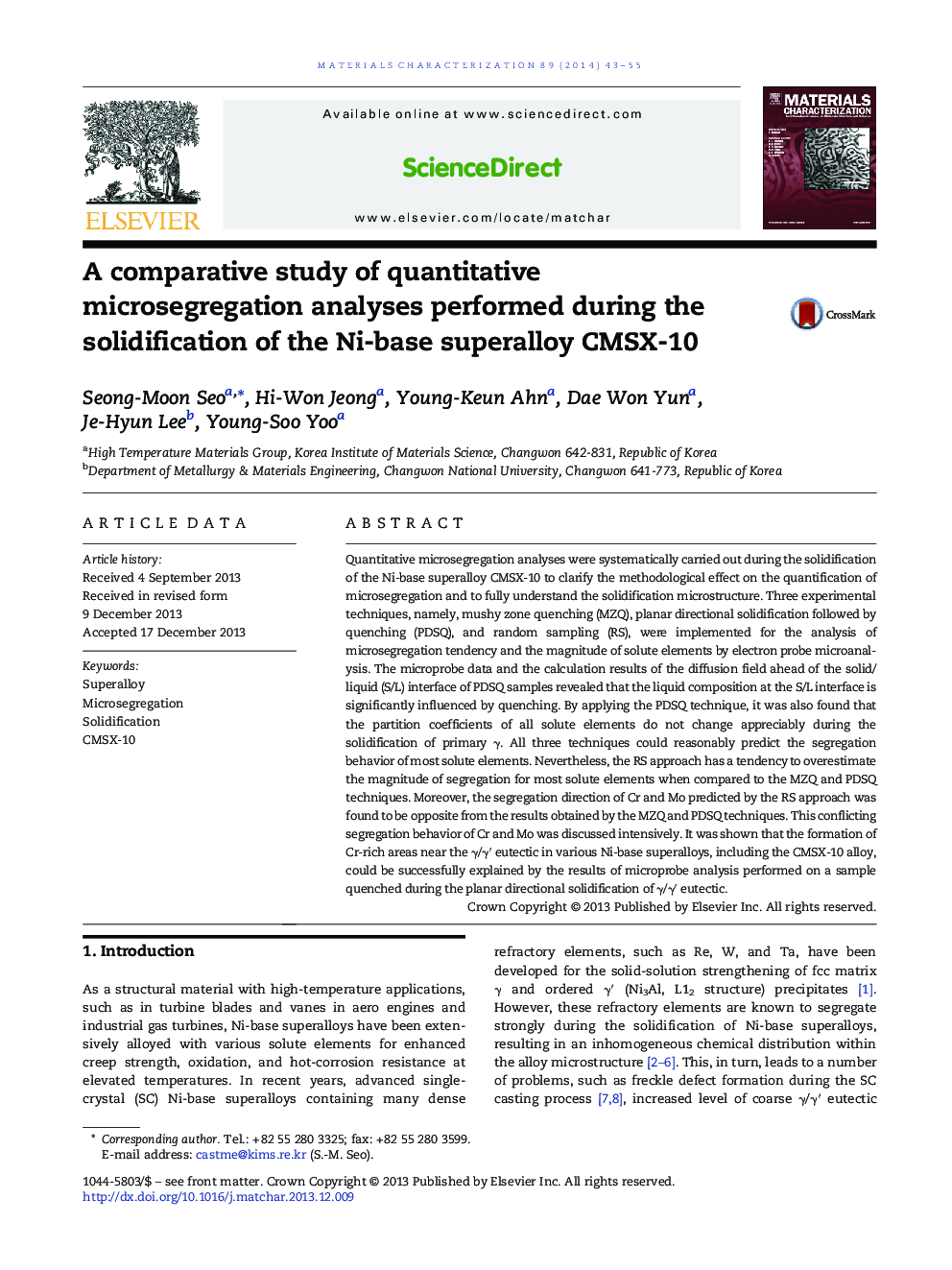| Article ID | Journal | Published Year | Pages | File Type |
|---|---|---|---|---|
| 7970933 | Materials Characterization | 2014 | 13 Pages |
Abstract
Quantitative microsegregation analyses were systematically carried out during the solidification of the Ni-base superalloy CMSX-10 to clarify the methodological effect on the quantification of microsegregation and to fully understand the solidification microstructure. Three experimental techniques, namely, mushy zone quenching (MZQ), planar directional solidification followed by quenching (PDSQ), and random sampling (RS), were implemented for the analysis of microsegregation tendency and the magnitude of solute elements by electron probe microanalysis. The microprobe data and the calculation results of the diffusion field ahead of the solid/liquid (S/L) interface of PDSQ samples revealed that the liquid composition at the S/L interface is significantly influenced by quenching. By applying the PDSQ technique, it was also found that the partition coefficients of all solute elements do not change appreciably during the solidification of primary γ. All three techniques could reasonably predict the segregation behavior of most solute elements. Nevertheless, the RS approach has a tendency to overestimate the magnitude of segregation for most solute elements when compared to the MZQ and PDSQ techniques. Moreover, the segregation direction of Cr and Mo predicted by the RS approach was found to be opposite from the results obtained by the MZQ and PDSQ techniques. This conflicting segregation behavior of Cr and Mo was discussed intensively. It was shown that the formation of Cr-rich areas near the γ/γⲠeutectic in various Ni-base superalloys, including the CMSX-10 alloy, could be successfully explained by the results of microprobe analysis performed on a sample quenched during the planar directional solidification of γ/γⲠeutectic.
Related Topics
Physical Sciences and Engineering
Materials Science
Materials Science (General)
Authors
Seong-Moon Seo, Hi-Won Jeong, Young-Keun Ahn, Dae Won Yun, Je-Hyun Lee, Young-Soo Yoo,
